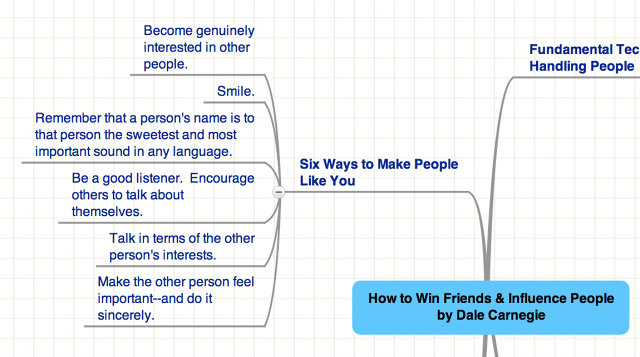6 POWERFUL COMMUNICATION TIPS FROM SOME OF THE WORLD'S BEST INTERVIEWERS
LISTENING INTENTLY ISN'T JUST FOR JOURNALISTS. HERE'S HOW TO SHARPEN YOUR INTERVIEWING SKILLS TO GET THE MOST OUT OF YOUR CONNECTIONS.
Everyone knows that particular feeling of dread that accompanies a lull in conversation at a party, networking event, or even a job interview.
You’ve already covered the usual small talk and then, oof, you hit a dead end. What now?
Even the most extroverted among us know that being a good conversationalist doesn’t always come easy--but there are some experts who have had more practice than the rest of us.
Writers, journalists and others who interview sources regularly have developed tried and true techniques that help them connect deeply with people.
Not only can interviews with thought leaders in your field provide a great source of content for your blog or website, the skills honed while interviewing are useful in many types of communication.
For instance, Terry Gross--known for her inviting style on the radio program Fresh Air--admits she wasn’t always so comfortable communicating.
“I feel really lucky that I know how to talk to people now, because I’ve talked to so many people and I know how to get a conversation going. Because I used to be really shy and would have been very uncomfortable doing that.”
We all want to be able to connect with people who are important to us, feel understood when working with a team and get to know new people better.
These six communication tricks from legendary interviewers can help you conduct a stellar interview, build a new relationship or simply become the best conversationalist in the room.
1. FIRST PREPARE NOTES, THEN TOSS THEM
Good interviewers always study up on their subject’s background – many even have a staff whose job it is to collect those resources.
If you can do so in advance, research the person or people with whom you’ll be speaking. A bit of familiarity will make you feel more confident – and will prime your subject to open up to you.
But during the moment of truth, you rarely see a professional interviewer following a script or referring to notes. A better, more casual approach is to stay in the moment and allow talk to flow naturally, as TV talk show veteran Dick Cavett advises.
“My former boss and idol for many years as a viewer, Jack Paar, called me before I started doing a talk show and said, ‘Hey kid, don’t do interviews.’ And I said, ‘What do I do, then, sing or just read to the audience?’ And he said, ‘No, interviews are boring. That’s just ‘What’s your favorite color?’ and that’s dull. Make it a conversation.’ And that’s almost the best secret. Throw your notes aside, if necessary.’"
A good interviewer knows how to make subjects comfortable enough to open up and reveal something real and true about themselves--and that only comes when both parties get a little vulnerable. That’s why comedian Marc Maron, host of cult favorite podcast WTF, focuses more on connection than research.
“I don’t do a hell of a lot of research. I go on a sort of kindred-spirit bonding that preexists the interview, and just see what unfolds. I’m just looking for authentic engagement of some kind … Some people just want to answer questions, but a lot of times, all of a sudden you drift away, and you don’t remember you’re on the mic, and you’re in something real. That, to me, is great.”

2. MATCH YOUR PARTNER--IN MOOD, ENERGY LEVEL, LANGUAGE AND BODY LANGUAGE
“The more comfortable you make someone feel, the better interview you’re ultimately going to get,” says interview veteran Katie Couric.
And how do you make someone feel more comfortable? Great interviewers do it by meeting subjects on their level. That means matching their mood, energy level, language style--even body language.
Calibrating your tone and energy level sets the stage for an evenly matched conversation and puts your subject at ease, while mirroring the body language of the person you’re speaking with is a nearly subliminal cue to show that you’re fully present in the conversation. Just keep it subtle.
Body language can also help defuse a tough conversation or argument (try moving so you’re facing the same direction as the person in question) and let you know when your subject is ready to leave the conversation (Are their feet facing toward the door? Time to let them go).
Just as important, says Fresh Air’s Terry Gross, is matching the right line of questioning to the right subject. The best interviews are never one-size-fits-all.
“There’s no generic one question to me. It would depend who the person is. I think one of the things about interviewing is that you don’t ask the same thing of everyone. It would really depend. Is that person a painter? Are they an avant-garde jazz musician? Are they a politician, a priest? Who are they?”
3. PRACTICE FLEXIBLE LISTENING
What seems like the simplest part of holding a conversation or conducting an interview is often the trickiest. It’s listening--the right way.
Skilled interviewers become adept at listening not just to the words their subject is saying but also the tone in which the words are said, the pauses and nuances of the answer and what’s being left unsaid.
This active, flexible listening lets them know when to move onto a new subject and when the moment is ripe to probe a little deeper with a follow-up question.
Off-the-cuff questions often yield the best answers – but the opportunity only arises from deep, engaged listening. Take a lesson from Katie Couric and stay poised to change direction based on what happens in the conversation.
“Nothing is worse for me as a viewer than to watch someone go down a laundry list of questions and not explore something with a little more depth after someone has answered a question … I think you need to use your questions as sort of a template, but you have to be willing to listen and veer off in a totally different direction.”
Worried about going down too many conversational rabbit-holes and forgetting to pick back up on an important point? Try the “outrageous image” technique from Dick Cavett.
“Eventually, I developed a memory technique from my friend, Harry Lorayne, the memory expert, of creating an outrageous image. Like if they were caught stealing an apple as a kid, but then they start talking about something else, you picture picking up an apple and throwing it in the face of, I don’t know, Mitt Romney or some prominent person. And that sort of startling image will trigger 'apple' for you later on.”
4. ACTIVATE THE POWER OF THE PAUSE
Remember that dreaded lull we talked about earlier? Sometimes – just sometimes – it can be a useful communications tool.
When a pro interviewer feels a subject is holding something back on a particular topic, they’ll often use the power of silence at the end of the answer to draw out more information.
Here’s how journalist Jim Lehrer describes it:
“If you resist the temptation to respond too quickly to the answer, you’ll discover something almost magical. The other person will either expand on what he’s already said or he’ll go in a different direction. Either way, he’s expanding his response, and you get a clear view into his head and heart.”
Try counting to three – or five if you can stand it – after your subject answers a tough or thoughtful question. This method can seem agonizing at first, but – used with empathy – it works wonders to develop a deeper rapport between two people.
Since our natural tendency is to fill in a silence, the pause can also work as a power play in a tougher scenario – say, a salary negotiation. Dick Cavett explains how he employs it tough-love style with interview guests:
“You can hold someone with silence and make them go on. You tend to feel you need to fill all dead air. There are times when if you just say no more than ‘uh-huh,’ and pause, they’ll add something out of a kind of desperation that turns out to be pretty good. Let them sweat a little and then they’ll come up with something that they were perhaps not going to say.”
5. CULTIVATE CURIOSITY: THE DALE CARNEGIE APPROACH
All of these techniques are tried and true, but they don’t really work without one simple quality on the interviewer’s part: curiosity.
A true passion for learning more about those around you goes further than any trick or even the most polished communication skills. Take it from Gay Talese, one of the legendary founders of literary journalism:
“I used to wander around. I never knew exactly what I was looking for. I knew vaguely what I hoped to find or I had some rough idea, but I was in the exploratory mode all the time … Just go out and discover and you’ll find by chance, by accident some terrific stories, some terrific people you never thought you would meet.”
You can cultivate curiosity in your daily life by noticing more details, delving deeply into the ideas that grab your interest and being alert to those around you and what makes them light up.
As Dale Carnegie famously explains, the beauty of curiosity is that it makes you nearly irresistible to everyone around you.
“You can make more friends in two months by becoming interested in other people than you can in two years by trying to get other people interested in you.”

6. PRACTICE EGO SUSPENSION: THE POWER OF FORGETTING YOURSELF
Of course we’d all like to think of ourselves as attentive, curious students of the world, but one little thing gets in the way: our own egos.
It’s not our fault--we’re hardwired that way. After all, talking about ourselves feels as good to our brains as money or sex.

That’s why ego suspension is so essential to cultivating the kind of curiosity that lets you connect with others. Robin Dreeke, lead instructor at the FBI’s Counterintelligence Training Center in behavioral and interpersonal skills training, explains:
“Most times, when two individuals engage in a conversation, each patiently waits for the other person to be done with whatever story he or she is telling. Then, the other person tells his or her own story, usually on a related topic and often times in an attempt to have a better and more interesting story. Individuals practicing good ego suspension would continue to encourage the other individual to talk about his or her story, neglecting their own need to share what they think is a great story.”
At the next gathering you attend, resist the urge to tell that one story that always kills and instead focus on asking questions of someone new. It may be unfulfilling at first, but you might be amazed at the end result.
As author Tom Wolfe puts it, “the world is full of people with information-compulsion who want to tell you their stories. They want to tell you things that you don’t know. They’re some of the greatest allies that any writer has.”
What tips and tricks have you picked up that help you connect with people and have more meaningful conversations? Let us know in the comments.
This post originally appeared in Buffer and is reprinted with permission.